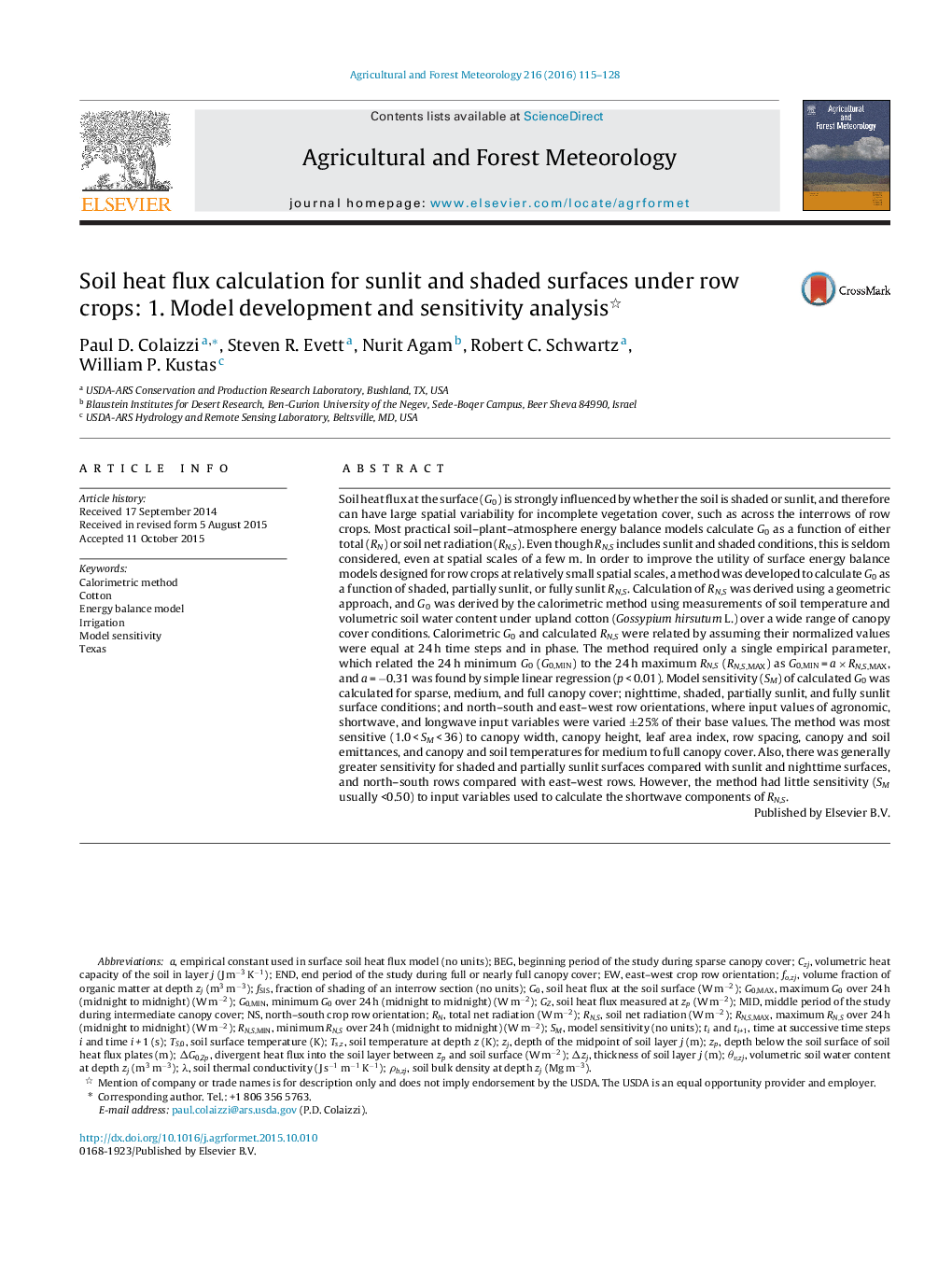| کد مقاله | کد نشریه | سال انتشار | مقاله انگلیسی | نسخه تمام متن |
|---|---|---|---|---|
| 6537112 | 158318 | 2016 | 14 صفحه PDF | دانلود رایگان |
عنوان انگلیسی مقاله ISI
Soil heat flux calculation for sunlit and shaded surfaces under row crops: 1. Model development and sensitivity analysis
ترجمه فارسی عنوان
محاسبه شار حرارتی خاک برای سطوح خورشیدی و سایه دار تحت محصولات ردیف: 1. توسعه مدل و تجزیه و تحلیل حساسیت
دانلود مقاله + سفارش ترجمه
دانلود مقاله ISI انگلیسی
رایگان برای ایرانیان
کلمات کلیدی
موضوعات مرتبط
مهندسی و علوم پایه
علوم زمین و سیارات
علم هواشناسی
چکیده انگلیسی
Soil heat flux at the surface (G0) is strongly influenced by whether the soil is shaded or sunlit, and therefore can have large spatial variability for incomplete vegetation cover, such as across the interrows of row crops. Most practical soil-plant-atmosphere energy balance models calculate G0 as a function of either total (RN) or soil net radiation (RN,S). Even though RN,S includes sunlit and shaded conditions, this is seldom considered, even at spatial scales of a few m. In order to improve the utility of surface energy balance models designed for row crops at relatively small spatial scales, a method was developed to calculate G0 as a function of shaded, partially sunlit, or fully sunlit RN,S. Calculation of RN,S was derived using a geometric approach, and G0 was derived by the calorimetric method using measurements of soil temperature and volumetric soil water content under upland cotton (Gossypium hirsutum L.) over a wide range of canopy cover conditions. Calorimetric G0 and calculated RN,S were related by assuming their normalized values were equal at 24 h time steps and in phase. The method required only a single empirical parameter, which related the 24 h minimum G0 (G0,MIN) to the 24 h maximum RN,S (RN,S,MAX) as G0,MIN = a Ã RN,S,MAX, and a = â0.31 was found by simple linear regression (p < 0.01). Model sensitivity (SM) of calculated G0 was calculated for sparse, medium, and full canopy cover; nighttime, shaded, partially sunlit, and fully sunlit surface conditions; and north-south and east-west row orientations, where input values of agronomic, shortwave, and longwave input variables were varied ±25% of their base values. The method was most sensitive (1.0 < SM < 36) to canopy width, canopy height, leaf area index, row spacing, canopy and soil emittances, and canopy and soil temperatures for medium to full canopy cover. Also, there was generally greater sensitivity for shaded and partially sunlit surfaces compared with sunlit and nighttime surfaces, and north-south rows compared with east-west rows. However, the method had little sensitivity (SM usually <0.50) to input variables used to calculate the shortwave components of RN,S.
ناشر
Database: Elsevier - ScienceDirect (ساینس دایرکت)
Journal: Agricultural and Forest Meteorology - Volume 216, 15 January 2016, Pages 115-128
Journal: Agricultural and Forest Meteorology - Volume 216, 15 January 2016, Pages 115-128
نویسندگان
Paul D. Colaizzi, Steven R. Evett, Nurit Agam, Robert C. Schwartz, William P. Kustas,
